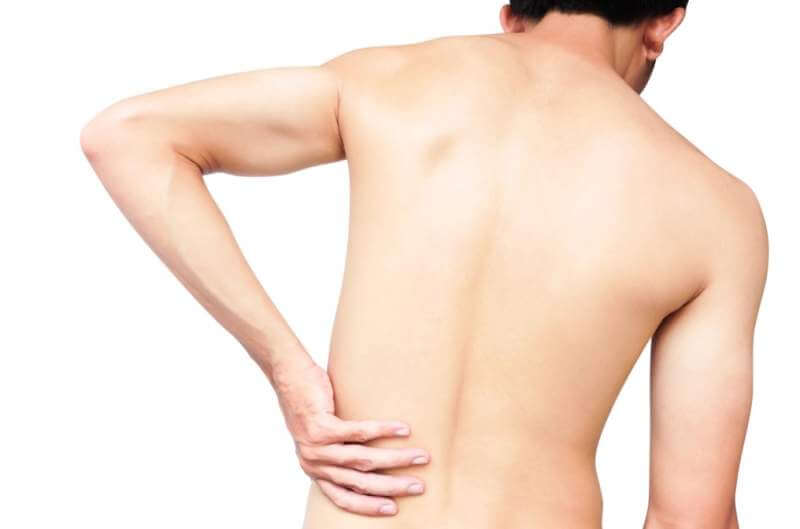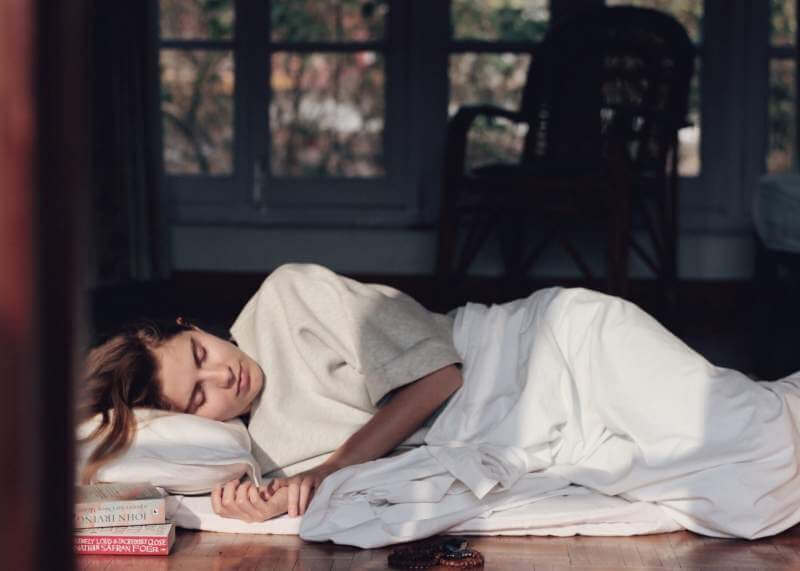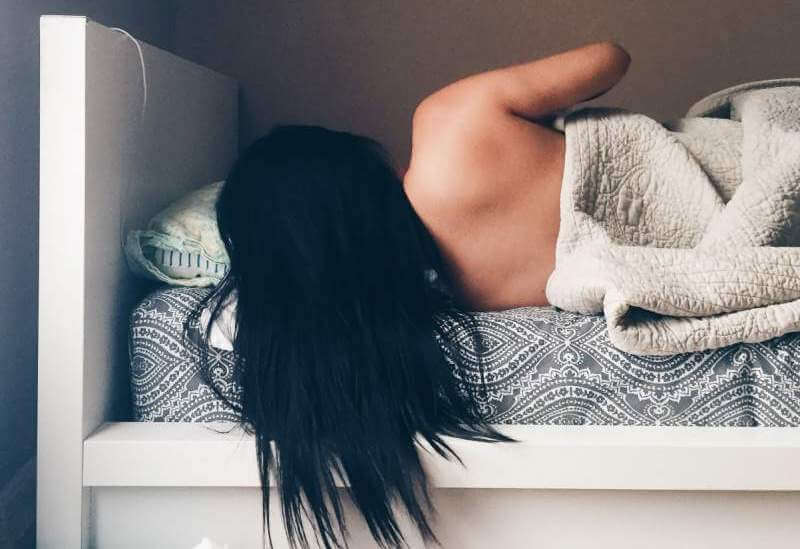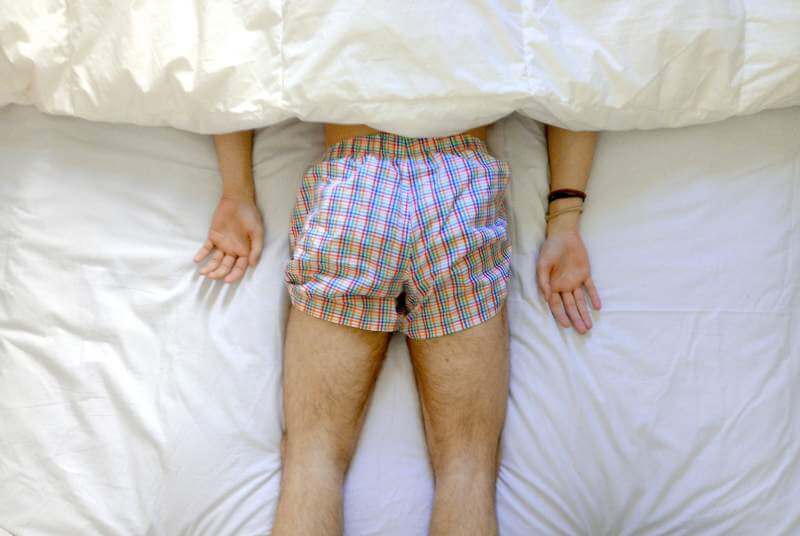Back pain can likely affect anyone at any time. However, a few traits are associated with higher risk. Older adults above 30 years of age and women are more likely to suffer from back pain. Moreover, people who are obese or overweight, and people with a desk bound lifestyle along with poor fitness levels have a higher probability of back pain. Therefore, physically strenuous work that involves a lot of pulling, pushing, or lifting creates a greater risk of personal injury or strain. In addition to this, another occupational risk encompasses long poor sitting stature as well as mentally stressful work. Let us have a look at the possible factors that increase the risk of back pain:
- Anxiety & Depression
- Sedentary lifestyles
- Smoking
- Stress
- Pregnancy
- Age ranges 35 to 55 (more common in women)
- Overweight/obesity
Undeniably, smoking is another significant factor that poses a potential threat to back pain. Research has shown that smokers are likely to expose to back pain for a couple of reasons. It includes nutrients that might not be able to reach the back where they are needed; or coughing etc. However, other factors likely increases the odds of back pain, which includes pregnancy, anxiety, strenuous exercise, and depression, and other certain genetic conditions.
Causes of Back Pain
 Back pain has a variety of potential causes starting from temporary muscle stress to spinal abnormalities. According to “Medical News Today” causes of back pain originates from different types of internal infections, strain, structural problems, and cancer, as well as sleep and mattress issues. However, the more common causes of back pain are:
Back pain has a variety of potential causes starting from temporary muscle stress to spinal abnormalities. According to “Medical News Today” causes of back pain originates from different types of internal infections, strain, structural problems, and cancer, as well as sleep and mattress issues. However, the more common causes of back pain are:
Bad mattress
Poor support from bad mattress causes worst pain in your neck and back
Lifestyle
Your lifestyle has a significant role to play in your back pain-relieving. Furthermore, poor posture, standing, hunching and bending for long periods and extended driving causes pain in your back as well as neck
Strain
Strained muscles or ligaments because of heavy lifting also causes pain
Skeletal problems
Skeletal problems also cause back pain through the following diseases: ruptured or bulging discs, sciatica, scoliosis, arthritis, and osteoporosis
Infections
It includes the following infections of the spine, pelvis, or nerves
Tips To Minimizing Back Pain During Sleep
 While back pain has a huge number of causes, there are sure things that should be possible to help limit the impacts around evening time. Guaranteeing your rest position is appropriately supporting your back, picking a decent sleeping position, and participating in a sound way of life propensities all assume a job.
While back pain has a huge number of causes, there are sure things that should be possible to help limit the impacts around evening time. Guaranteeing your rest position is appropriately supporting your back, picking a decent sleeping position, and participating in a sound way of life propensities all assume a job.
Be Careful Getting In and Out of Bed
Many back injuries are ascribed to making ungainly developments when doing routine things. One of the simpler approaches to anticipate new injuries or intensifying old ones is to be aware of your developments. Here are a couple of pointers on securing your back when getting out of bed:
Do not twist your back or make rapid jerking motions
Get in bed by sitting on the edge of the sleeping cushion. Supporting yourself with your hands, twist your knees and lay on your side. At that point, modify your situation as required. Get this show on the road with your side (confronting the edge of the sleeping cushion) and twist in your knees. Supporting yourself with your hands, cautiously swing your legs to the floor and stand upright. Get up from the situated position.
Choose Sleep Positions that Support Pain Relief
How you sleep plays an important role in managing back pain, as certain positions place more strain on the back than others do. Sleeping on your back as well as side sleep is regarded as the most suitable position to counter back pain, while stomach sleeping tends to be most associated with pain. However, irrespective of the positions you prefer, here are tips for staying comfortable.
Side Sleepers
 Side sleeping is the most well-known position, particularly among ladies. While it can put some strain on the body, guaranteeing your hips and shoulders are upheld can make it agreeable.
Side sleeping is the most well-known position, particularly among ladies. While it can put some strain on the body, guaranteeing your hips and shoulders are upheld can make it agreeable.
In a perfect world, side sleepers should twist the two knees in somewhat and place a little cushion between their legs to keep hips from curving and setting weight on the back. On the off chance that your legs are excessively straight, this can overstate the bend of your lower back, yet if your legs are attracted too firmly, your back may adjust — and both can cause torment.
Your neck cushion ought to be the correct stature to keep your neck and spine straight and even, mostly higher than pads required for back sleepers. Your jawline need not be attracted to your chest or inclined excessively far back. Think common standing position.
Conditions that may see more alleviation from appropriate side sleeping incorporate osteoarthritis, spinal stenosis, and foraminal herniated plate, as the position can diminish weight on spinal joints.
Back Sleepers
 Back sleeping is ordinarily what you will see suggested as the perfect situation for back wellbeing. It is the second most basic rest position, and with decent bedding, sleeping on your back backings an unbiased neck and spine position.
Back sleeping is ordinarily what you will see suggested as the perfect situation for back wellbeing. It is the second most basic rest position, and with decent bedding, sleeping on your back backings an unbiased neck and spine position.
To advance solace and backing, you can make two or three adjustments. Putting a little pad or towel underneath your knees diminishes strain and pressure on the lower back and hips by making an increasingly regular spinal bend. Legs ought to in a perfect world be situated straight out (not commenced to the side or spread excessively wide, which can strain the pelvis and hip joints).
Other individuals may feel a little pad under the lumbar district loans extra accommodating help. Bed cushions should bolster the normal edge of the neck, not push your jawline to your chest, or enable your head to fall back excessively far.
The semi-fowler position, in which the head and foot are both raised, is frequently suggested for lower back agony, particularly the sort that feels more terrible when you stand upright. A leaning back seat or customizable bed can enable you to accomplish this position.
Stomach Sleepers
 Sleeping on your stomach is viewed as least perfect for pain relief, since the lumbar locale is left unsupported, setting strain on your spine and lower back muscles. This position can likewise place strain on your neck and shoulders.
Sleeping on your stomach is viewed as least perfect for pain relief, since the lumbar locale is left unsupported, setting strain on your spine and lower back muscles. This position can likewise place strain on your neck and shoulders.
Sleeping on your stomach is the most horrendous rest pose, putting colossal weight on the lower back making the spinal joints pack. Therefore, it is advisable to use props to help the spine, regardless of whether on your back or side. To all the more likely help your body; place a cushion under your pelvis and lumbar locale. At your head, utilize a level pad or no cushion so as not to strain your lower back.
There are two circumstances where stomach sleeping is suggested, however. Individuals with degenerative circle illness and paracentral plate herniation may feel more help laying on their stomachs since it can diminish circle weight contrasted with different positions. A solid sleeping cushion with a pad underneath the mid-region is viewed as best.
